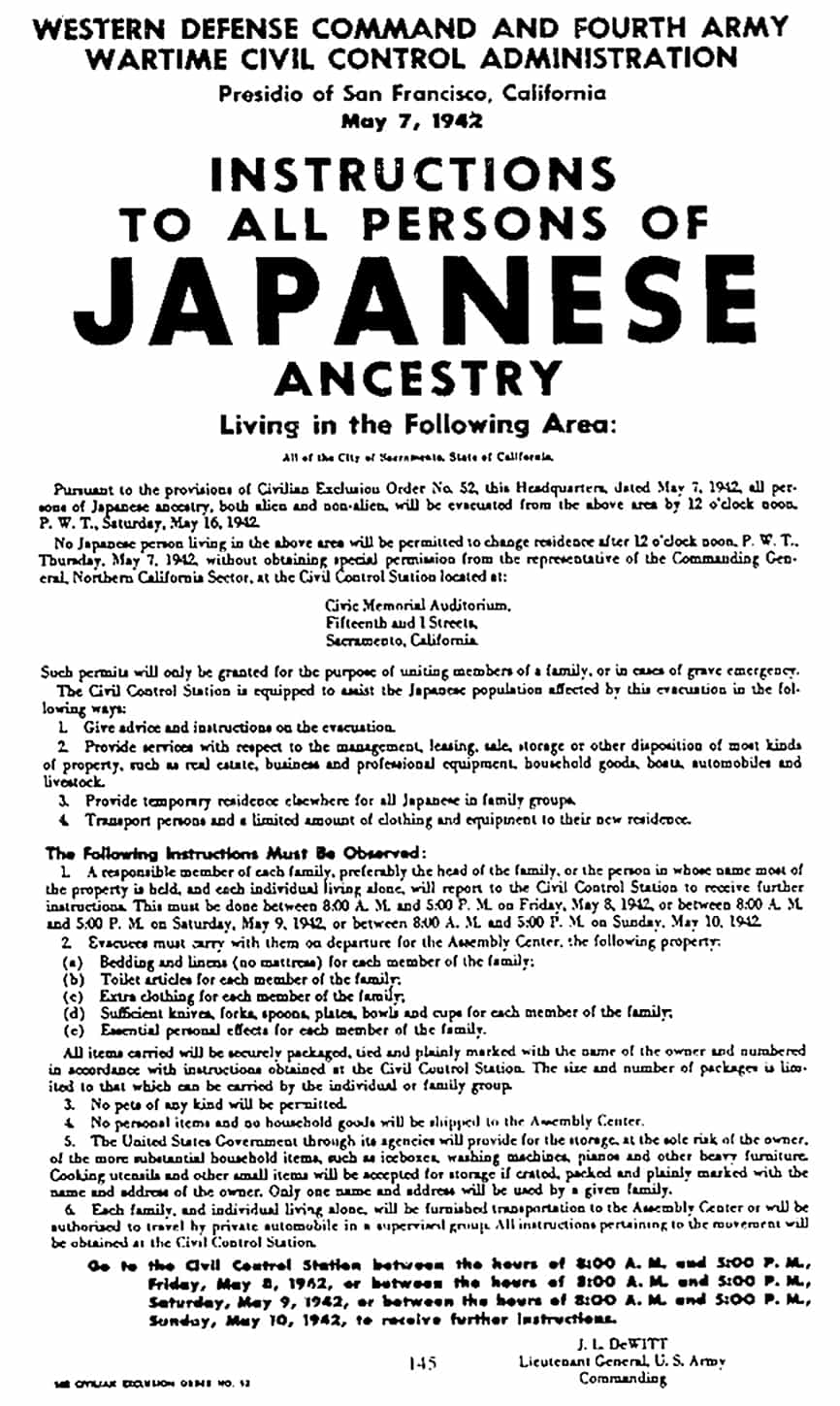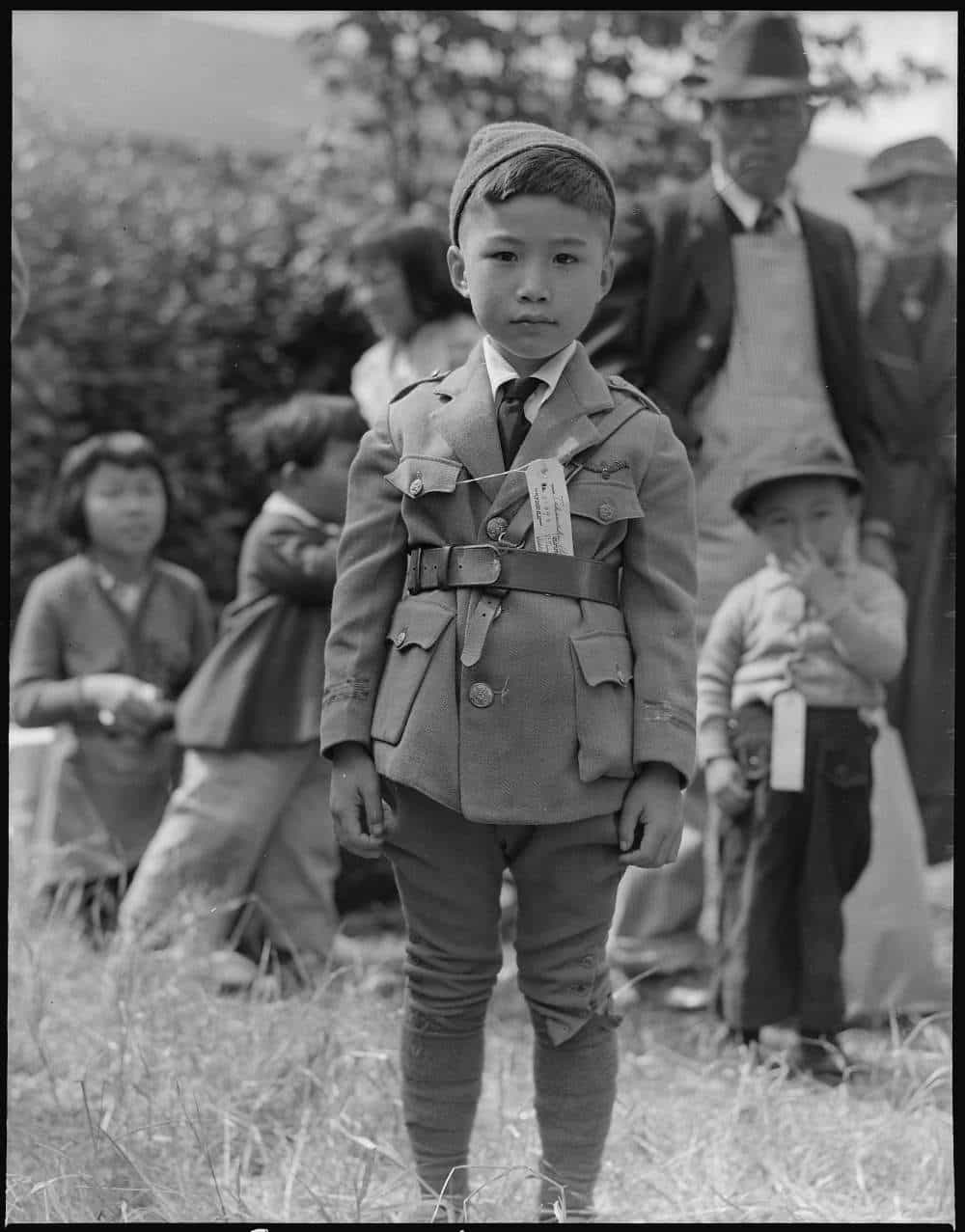For the Museum in a Suitcase project for the Oregon Nikkei Legacy Center, I wanted to create a lesson plan that encompassed the cultural experience during the time of Pearl Harbor and Incarceration of Japanese-Americans as well as discussing the question of whether it was Constitutional or not. It is a unique story that lends itself well to the study of marginalized communities throughout American History. This lesson is adapted primarily from OPB’s The Fillmore Neighborhoods and Japanese-American Internment Lesson. The following lesson plan can be utilized in any social studies classroom studying the Constitution for a lively role-play or those American Studies classrooms investigating what really happened to the Japanese-Americans after the bombing at Pearl Harbor. Enjoy!
For a PDF of the whole lesson plan, click here (File size 161 KB).

Overview of the Japanese-American Incarceration Experience: What would it feel like to have family and friends rounded up and ‘deported’ because of their race? In this lesson, students will gain a sense of what the experience may have been like for Japanese-Americans from Portland, Oregon’s Japantown during World War II. This lesson would fit it reasonably well with students who have already studied WWII, the bombing at Pearl Harbor, and constitutional history.
Goal: To analyze the Japanese-American experience of leaving their homes for years of incarceration. To observe and analyze the photographs and newspaper articles that describe this experience. To interpret the incarceration policy as constitutional or not.
Standards:
- CCSS.ELA-Literacy.RH.11-12.1 Cite specific textual evidence to support analysis of primary and secondary sources, connecting insights gained from specific details to an understanding of the text as a whole.
- CCSS.ELA-Literacy.RH.11-12.2 Determine the central ideas or information of a primary or secondary source; provide an accurate summary that makes clear the relationships among the key details and ideas.
- CCSS.ELA-Literacy.RH.11-12.3 Evaluate various explanations for actions or events and determine which explanation best accords with textual evidence, acknowledging where the text leaves matters uncertain.
- CCSS.ELA-Literacy.RH.11-12.7 Integrate and evaluate multiple sources of information presented in diverse formats and media (e.g., visually, quantitatively, as well as in words) in order to address a question or solve a problem.
- CCSS.ELA-Literacy.RH.11-12.8 Evaluate an author’s premises, claims, and evidence by corroborating or challenging them with other information.
- CCSS.ELA-Literacy.RH.11-12.9 Integrate information from diverse sources, both primary and secondary, into a coherent understanding of an idea or event, noting discrepancies among sources.
Objectives:
- Students will be able to analyze photographs and newspaper clippings from the time period in which Japanese-Americans were incarcerated.
- Students will be able to write a reflection that explains the experience of these Americans making connections from prior knowledge, experience, images analyzed.
- Students will be able to interpret the U.S. Constitution to uphold or reject the incarceration policy; discuss the constitutional issues in conflict during this time (habeas corpus, treason, equality before the law, citizen rights, search and seizure).
Time: Approximately 2 hours


